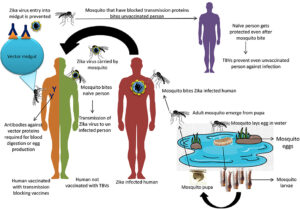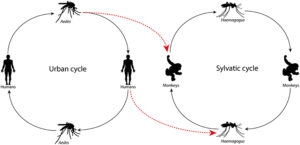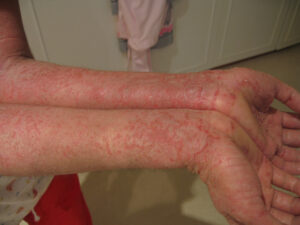Personality disorders are complex mental health conditions that affect how individuals perceive themselves and interact with the world around them. Among these, Histrionic Personality Disorder stands out due to its distinct characteristics. Often abbreviated as HPD, this condition is marked by a pervasive pattern of excessive emotionality and attention-seeking behavior. In this article, we will delve into the intricacies of this disorder, exploring its causes, symptoms, and available treatments to provide a comprehensive understanding.

What is Histrionic Personality Disorder?
Histrionic Personality Disorder is a type of personality disorder characterized by a consistent pattern of seeking attention and displaying overly dramatic or exaggerated emotions. People with this condition often feel uncomfortable when they are not the center of attention and may engage in behaviors that draw focus to themselves. This need for attention can significantly impact their personal and professional relationships, leading to challenges in maintaining healthy connections with others.
Key Features of the Disorder
- A tendency to be overly concerned with physical appearance
- Frequent displays of shallow or rapidly shifting emotions
- A need for constant approval and reassurance from others
- Dramatic and theatrical expressions of emotion
- Impressionistic and vague speech patterns
- Suggestibility and susceptibility to influence by others
Causes of Histrionic Personality Disorder
The exact cause of Histrionic Personality Disorder is not fully understood, but researchers believe it arises from a combination of genetic, environmental, and psychological factors. These influences shape an individual’s personality and contribute to the development of maladaptive behaviors.
Genetic Factors
Research suggests that genetics may play a role in the development of this disorder. Individuals with a family history of personality disorders or other mental health conditions may be at a higher risk of developing similar issues. While no specific gene has been identified as the sole cause, inherited traits such as temperament and emotional regulation may predispose someone to this condition.
Environmental Influences
Early childhood experiences and upbringing can significantly impact the development of Histrionic Personality Disorder. Children who grow up in environments where they receive inconsistent attention or validation may develop attention-seeking behaviors as a coping mechanism. For example, if a child is only praised for their appearance or performance rather than their inherent worth, they may internalize the belief that external validation is necessary for self-worth.
Psychological Factors
Certain personality traits, such as impulsivity or low self-esteem, may increase the likelihood of developing this disorder. Additionally, individuals who struggle with identity formation or have difficulty regulating their emotions may be more prone to adopting attention-seeking behaviors as a way to cope with underlying insecurities.
Symptoms of Histrionic Personality Disorder
The symptoms of Histrionic Personality Disorder typically manifest in early adulthood and persist over time. These symptoms can vary in intensity but generally revolve around a person’s need for attention and their tendency to display exaggerated emotions.
Excessive Attention-Seeking Behavior
One of the hallmark symptoms of this disorder is an overwhelming desire to be the center of attention. Individuals may go to great lengths to ensure they are noticed, whether through flamboyant clothing, dramatic storytelling, or provocative behavior. They often feel uneasy or anxious when they are not receiving the attention they crave.
Rapidly Shifting Emotions
People with this condition tend to experience emotions that are intense but short-lived. Their feelings may change quickly, leaving others confused or overwhelmed by their unpredictability. This emotional instability can make it difficult for them to form deep, meaningful connections with others.
Overemphasis on Physical Appearance
Physical appearance often plays a central role in the lives of individuals with this disorder. They may spend excessive amounts of time grooming or choosing outfits designed to attract attention. This preoccupation with appearance is not merely about vanity but serves as a tool to gain validation and admiration from others.
Impressionistic Speech Patterns
Speech in individuals with this disorder tends to be vague, impressionistic, and lacking in detail. They may use exaggerated language or metaphors to describe their experiences, making it challenging for others to discern the true nature of their thoughts and feelings.
Suggestibility and Influence
Another common symptom is heightened suggestibility, meaning that individuals are easily influenced by others’ opinions or ideas. They may adopt new beliefs or behaviors quickly, often without critically evaluating them, in an effort to align with those around them and maintain social connections.
Impact on Relationships and Daily Life
Histrionic Personality Disorder can have a profound impact on both personal and professional relationships. The constant need for attention and validation can strain friendships, romantic partnerships, and workplace dynamics. Colleagues or loved ones may find it exhausting to constantly reassure or cater to the individual’s emotional needs, leading to frustration and conflict.
Challenges in Personal Relationships
In romantic relationships, individuals with this condition may exhibit clingy or possessive behavior, fearing abandonment or neglect. Their partners may feel overwhelmed by the intensity of their emotions and the pressure to provide constant reassurance. Over time, this dynamic can erode trust and intimacy, resulting in relationship breakdowns.
Difficulties in Professional Settings
In the workplace, attention-seeking behaviors can create tension among colleagues and supervisors. For example, an individual may dominate meetings with dramatic anecdotes or seek praise for minor accomplishments. This behavior can alienate coworkers and hinder collaboration, ultimately affecting job performance and career advancement.
Treatment Options for Histrionic Personality Disorder
While there is no cure for Histrionic Personality Disorder, various treatment approaches can help individuals manage their symptoms and improve their quality of life. Therapy is the primary method of intervention, focusing on addressing underlying issues and developing healthier coping mechanisms.
Psychotherapy
Psychotherapy, particularly cognitive-behavioral therapy, is one of the most effective treatments for this disorder. Through therapy, individuals can explore the root causes of their attention-seeking behaviors and learn strategies to regulate their emotions. Therapists work with clients to identify distorted thought patterns and replace them with more realistic and constructive beliefs.
Goals of Psychotherapy
- Enhancing self-awareness and emotional regulation
- Improving interpersonal skills and communication
- Building self-esteem independent of external validation
- Reducing reliance on dramatic or manipulative behaviors
Group Therapy
Group therapy provides a supportive environment where individuals can practice social skills and receive feedback from peers. Sharing experiences with others who face similar challenges can foster a sense of belonging and reduce feelings of isolation. Group settings also offer opportunities to observe and model healthy interactions.
Medication
While medication is not a primary treatment for this disorder, it may be prescribed to address co-occurring conditions such as depression or anxiety. Antidepressants or anti-anxiety medications can help alleviate symptoms that exacerbate attention-seeking behaviors, allowing individuals to focus more effectively on therapeutic interventions.
Lifestyle Changes
In addition to professional treatment, lifestyle modifications can support recovery. Engaging in activities that promote self-expression, such as art or music, can provide alternative outlets for emotions. Regular exercise, mindfulness practices, and stress management techniques can also contribute to improved emotional well-being.
Supporting Loved Ones with Histrionic Personality Disorder
If someone close to you is living with this condition, it is essential to approach the situation with empathy and understanding. Encourage them to seek professional help while setting boundaries to protect your own mental health. Educating yourself about the disorder can enhance your ability to communicate effectively and respond compassionately to their needs.
Tips for Supporting a Loved One
- Listen actively and validate their feelings without reinforcing attention-seeking behaviors
- Avoid enabling manipulative tactics by maintaining consistent expectations
- Encourage participation in therapy or support groups
- Prioritize open and honest communication
Misconceptions About Histrionic Personality Disorder
Despite growing awareness of mental health issues, misconceptions about this disorder persist. Some people mistakenly view individuals with this condition as merely “dramatic” or “self-centered,” dismissing the deeper psychological struggles they face. It is crucial to recognize that this disorder is a legitimate mental health condition requiring compassion and appropriate care.
Common Misunderstandings
- Believing that individuals choose to act dramatically rather than experiencing genuine distress
- Assuming that attention-seeking behaviors are solely motivated by selfishness
- Minimizing the impact of the disorder on daily functioning and relationships





